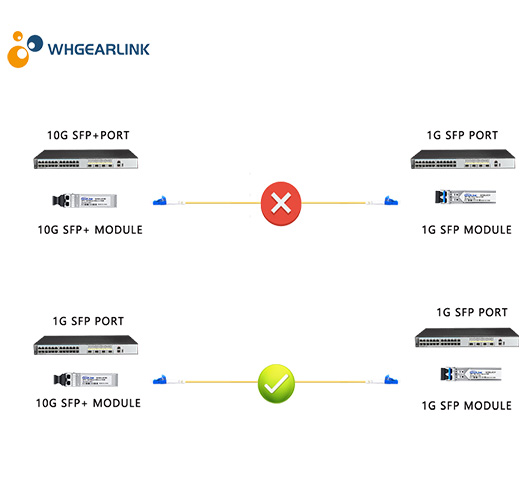Most of the optical transceivers used in the market have a rate between 1.25G and 100G, and the port types on the switch include 1G/10G/electrical port/25G/100G, etc. But in appearance, the 1G port is similar to the 10G port. At this time, there is a question. Can high-speed optical transceivers be used on low-speed ports, and can low-speed optical transceivers be used on high-speed ports?
Let's take 1G port and 10G port as examples. For Ethernet, the operating speed of 1G port is 1G. The transmission rate of the SFP+ optical transceiver is 10G. The SFP+ optical transceiver can be inserted into the 1G port, because the shape and size of the SFP optical transceiver and the SFP+ optical transceiver are the same. However, the port rate of the 1G port determines that the SFP+ optical transceiver can only reach the rate of 1G when used on the 1G port, which greatly wastes optical transceiver resources.
For Ethernet, the SFP+ port runs at 10G. The transmission rate of the SFP optical transceiver is 1G, and the SFP optical transceiver can be inserted into a 10G port, and generally it can be used normally. When the SFP optical transceiver is inserted into a 10G port, the transmission rate of the link will drop to 1G, and the transmission rate of the link will not return to normal until the switch is reset or a command is input. However, the 10G port cannot support the rate below 1G, and the specific actual use still has to consult the supplier.
It can be seen from the above that high-speed optical transceivers cannot be used normally on low-speed ports. The maximum speed can only reach the speed of the port but not the speed of the optical transceiver itself; in general, low-speed optical transceivers can Used on a high-speed port, the operating speed is the speed of the optical transceiver, and the connection can be normally transmitted as long as the speed of the two transceivers is the same.


